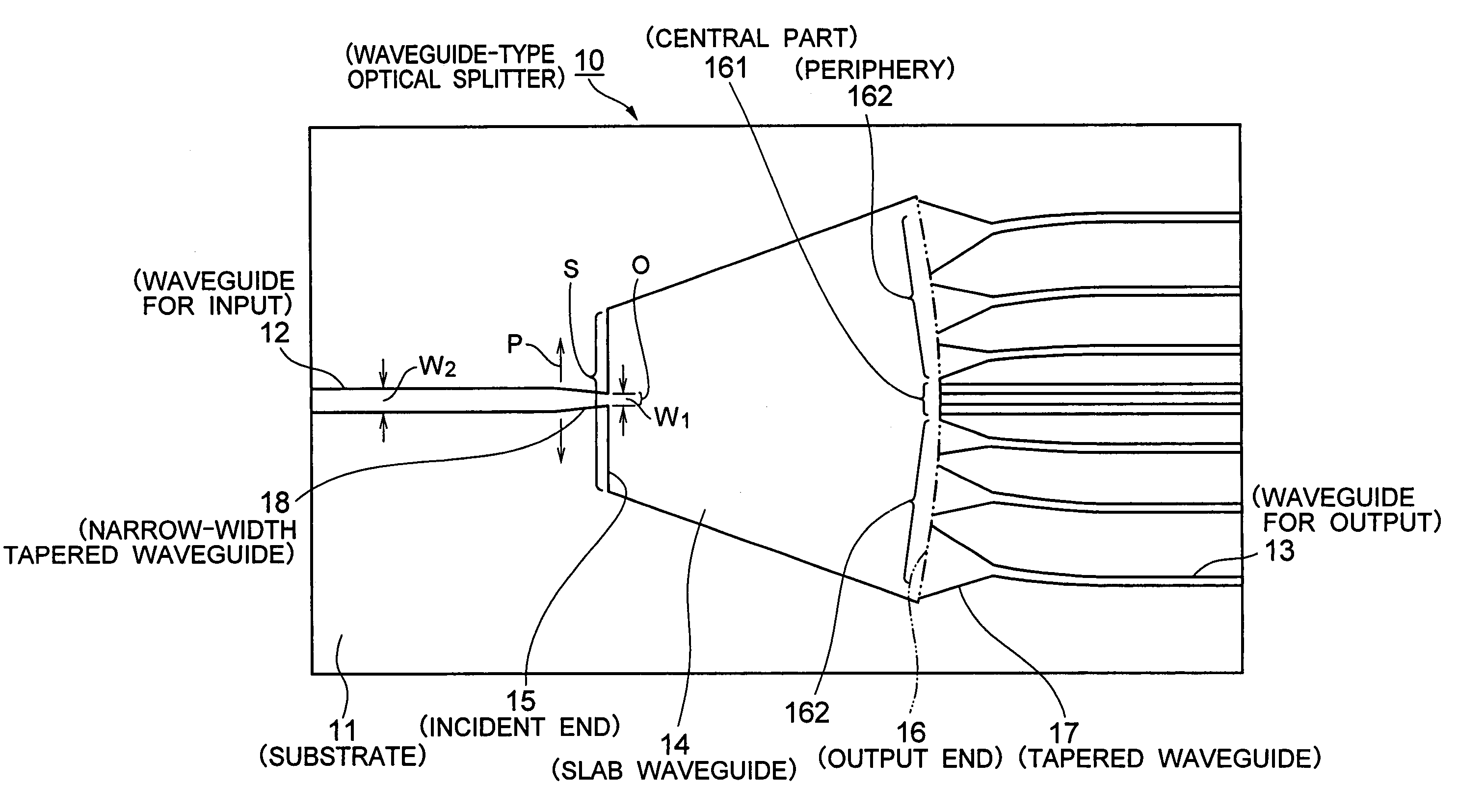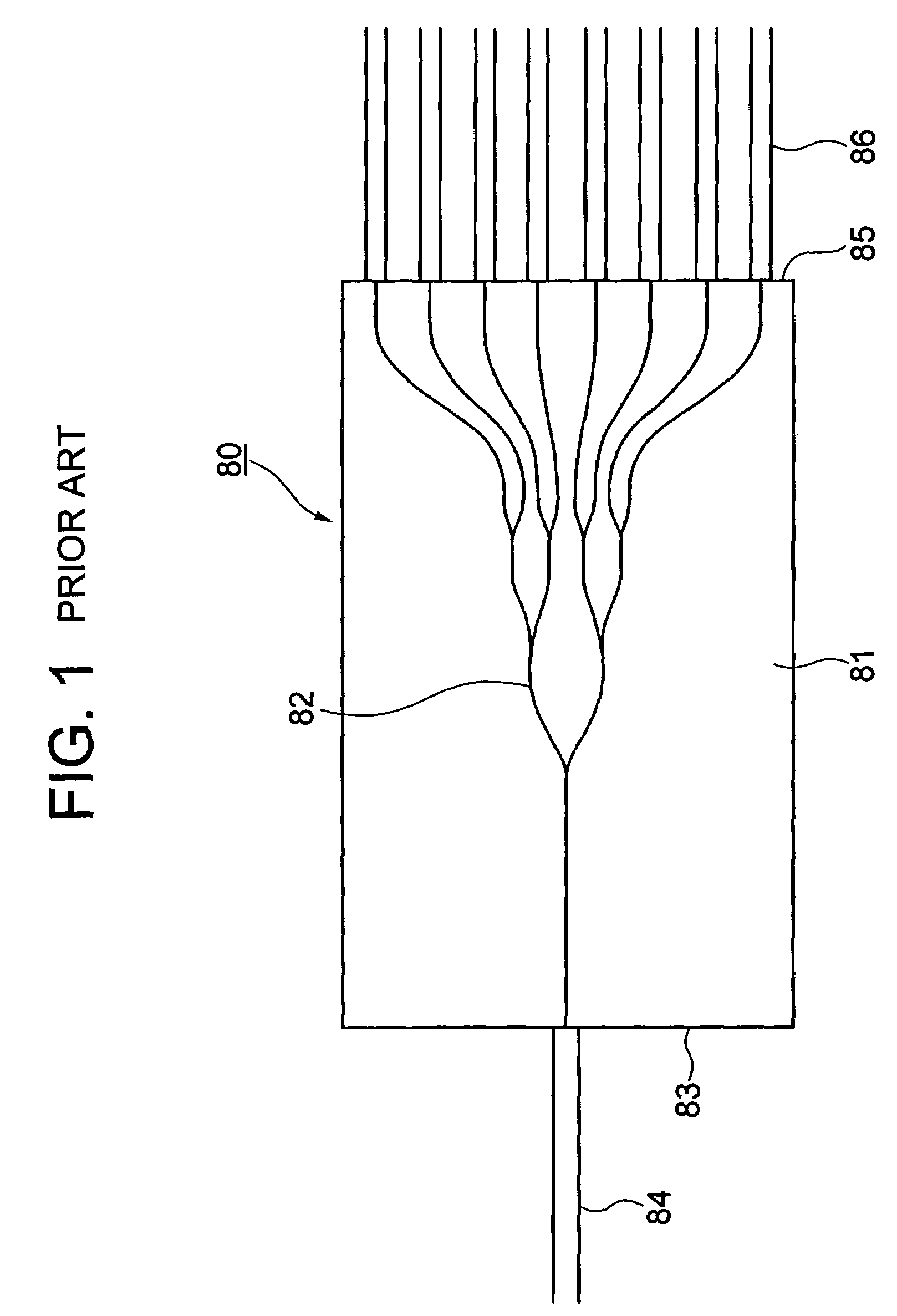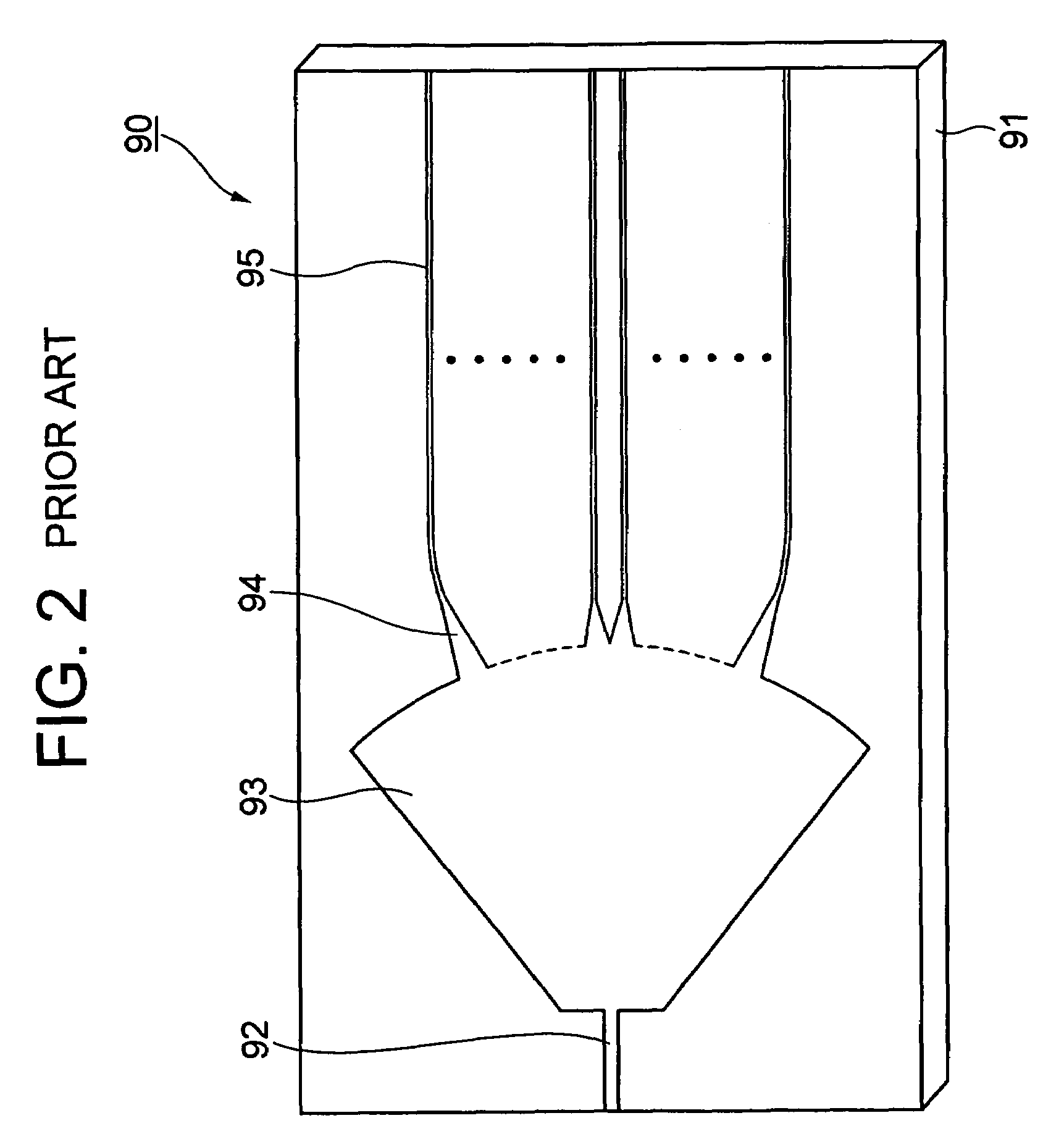Waveguide-type optical splitter and waveguide-type optical module having the same
a technology of optical splitter and optical module, which is applied in the field of waveguide-type optical splitter and waveguide-type optical module, can solve the problems of not meeting the needs of customers, pdl cumulative increase, and adverse influence on optical characteristics
- Summary
- Abstract
- Description
- Claims
- Application Information
AI Technical Summary
Benefits of technology
Problems solved by technology
Method used
Image
Examples
first embodiment
[0031]FIG. 3 is a plan view which shows a waveguide-type optical splitter according to the present invention. FIG. 4 is a partial enlarged view of the FIG. 3. Descriptions are provided below with reference to the FIG. 3 and the FIG. 4.
[0032]In a waveguide-type optical splitter 10 of this embodiment, a waveguide for input 12, a plurality of waveguides for output 13 and a slab waveguide 14 are formed on a substrate 11. The waveguide for input 12 is so configured as to introduce an optical signal. The slab waveguide 14 is so configured as to cause the optical signal introduced in the waveguide for input 12 to branch off by diffraction and to propagate. The plurality of waveguides for output 13 are so configured as to output individually a plurality of optical signals which have been branched off inside the slab waveguide 14. The slab waveguide 14 has an incident end 15 and an output end 16. In the slab waveguide 14, the output end 16 is formed in a shape of an arc in the incident end 1...
fourth embodiment
[0051]FIG. 7 is a plan view showing the waveguide-type optical splitter according to the present invention. Descriptions are provided below with reference to this drawing. However, regarding the same part as in the FIG. 3, explanations are omitted by denoting the same reference numeral.
[0052]The waveguides for output 13 shown in the FIG. 7 is provided with a function for reducing the transmission loss of the optical signal. In a joining point of the waveguide for output 13 and the tapered waveguide 17 which is a part of the waveguide for output 13 (hereinafter these waveguides are referred as a waveguide for output 13) and the slab waveguide 14, loss in power (hereinafter referred as “insertion loss”) due to a scattering of light is generated. At this time, if a plurality of waveguides are crossed over a plurality of waveguides for output, the loss at the output end is reduced.
[0053]Consequently, the waveguides for output 13 shown in the FIG. 7 is arranged a plurality of waveguides ...
PUM
 Login to View More
Login to View More Abstract
Description
Claims
Application Information
 Login to View More
Login to View More - R&D
- Intellectual Property
- Life Sciences
- Materials
- Tech Scout
- Unparalleled Data Quality
- Higher Quality Content
- 60% Fewer Hallucinations
Browse by: Latest US Patents, China's latest patents, Technical Efficacy Thesaurus, Application Domain, Technology Topic, Popular Technical Reports.
© 2025 PatSnap. All rights reserved.Legal|Privacy policy|Modern Slavery Act Transparency Statement|Sitemap|About US| Contact US: help@patsnap.com



